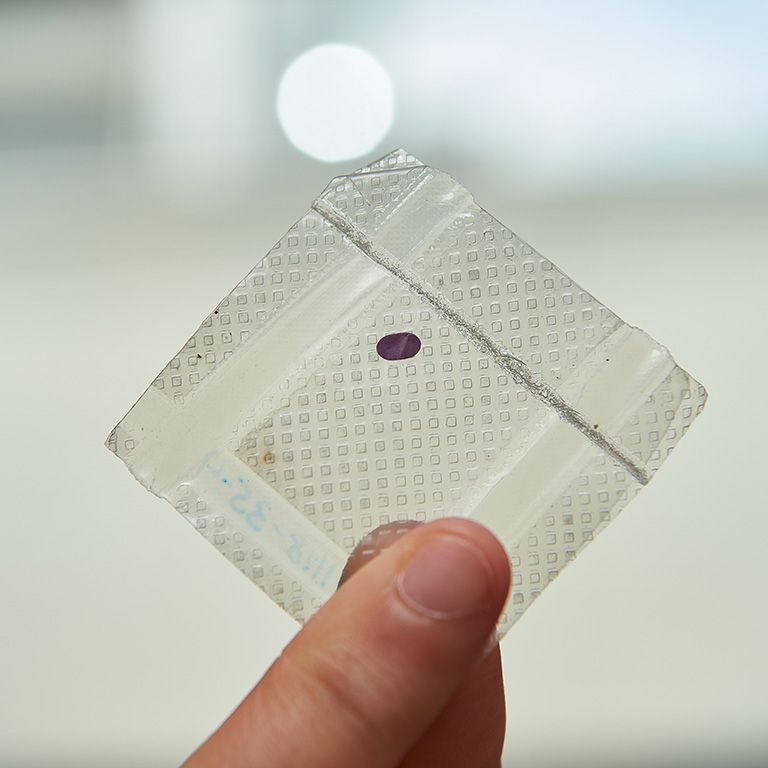- COVID-19
- Biosimilars
- Cataract Therapeutics
- DME
- Gene Therapy
- Workplace
- Ptosis
- Optic Relief
- Imaging
- Geographic Atrophy
- AMD
- Presbyopia
- Ocular Surface Disease
- Practice Management
- Pediatrics
- Surgery
- Therapeutics
- Optometry
- Retina
- Cataract
- Pharmacy
- IOL
- Dry Eye
- Understanding Antibiotic Resistance
- Refractive
- Cornea
- Glaucoma
- OCT
- Ocular Allergy
- Clinical Diagnosis
- Technology
Artificial retina production among projects headed to International Space Station
LambdaVision is leveraging the microgravity environment of the space station to develop higher-quality implants than is currently possible on Earth.
(Image Credit: AdobeStock/alexyz3d)

A project to construct artificial retinas in space is among more than 20 payloads sponsored by the International Space Station (ISS) National Laboratory, and set to launch on Northrop Grumman's 20th Commercial Resupply Services mission (NG-20).
According to a news release from the ISS National Laboratory, this will be the first mission in which a Northrop Grumman Cygnus spacecraft launches atop a SpaceX Falcon 9 rocket. The mission, contracted through NASA, will launch from Space Launch Complex 40 at Cape Canaveral Space Force Station in Florida no earlier than Monday, January 29, 2024.1
Building on previous investigations, biotechnology startup LambdaVision will study whether a powdered form of the protein bacteriorhodopsin can be dissolved in solution in microgravity for the successful layer-by-layer manufacturing of artificial retinas.
According to a news release,2 an estimated 1.5 million people worldwide are affected by retinitis pigmentosa. Currently, there is no cure, but researchers from LambdaVision are turning to the ISS National Laboratory to look for solutions. Through the microgravity environment of the orbiting laboratory, they hope to develop artificial retinas that will restore significant vision in patients with the disorder.
Nicole Wagner, PhD, president and CEO of LambdaVision, designed a layer-by-layer manufacturing process to develop a protein-based artificial retina. In 2018, the company was awarded a grant through the Technology in Space Prize, funded by Boeing and the Center for the Advancement of Science in Space (CASIS), manager of the ISS National Lab, in partnership with MassChallenge to launch its first experiment.
That project is a key driver to an effort to leverage the microgravity environment of the space station to develop higher-quality implants than is currently possible on Earth. This is because because on Earth, gravity’s effects can hinder the manufacturing process, resulting in sedimentation and reducing the amount of useable implants.2
“To date, we’ve flown a total of eight missions to the ISS,” Wagner said in the news release. “Most of those missions have focused primarily on improving the hardware, automation, imaging capabilities, and in-orbit processes and controls.”
Moreover, Wagner noted that the previous flights have led to the development of 10 test retinas, which were returned to Earth
According to Wagner, those flights have yielded 10 test retinas, which have been returned to Earth for analysis. The company has refined the manufacturing process and is now focusing on making the entire process scalable. As a part of this investigation, the researchers are examining a new method of transporting bacteriorhodopsin, the protein used in the implants, to low Earth orbit (LEO). As a result, the company is sending a powdered form of the protein to the space station for testing on NG-20.2
LambdaVision’s protein-based retinal implant the small purple dot, which is about the size of a paper punch. (Image credit: Peter Morenus/UConn Photo)

Like other LambdaVision projects, this experiment will be housed in a Space Tango CubeLab, complete with fluidics capabilities, pumps, and cameras that will send real-time images to the ground. This will allow researchers to observe and monitor the process and take control if necessary. The researches also will be able to conduct spectral analysis of the protein to make sure the process is sufficient by monitoring uniformity and comparing the solution to controls, which are known concentrations of protein already in solution.
“The fluidic systems and cameras that are used for imaging this time are all built on what we’ve learned from past experiences with the layering experiments,” Jordan Greco, chief technology officer of LambdaVision, said in the news release. “The addition of the absorption spectrometer is what we’re particularly excited about, as the spectrometer can tell us a lot about the quality and purity of the protein.”
Results from this research will help LambdaVision ramp up production to manufacture enough implants for those affected by retinitis pigmentosa. According to Wagner, the company hopes to eventually be able to produce enough to restore sight in individuals affected by all retinal degenerative diseases, including macular degeneration.
Other projects headed to the ISS include a pair of robotic arms, and a new method of producing improved optical fibers.
More than 900 pounds of supplies, research, and technology demonstrations are flying on NG-20, enabling commerce in low Earth orbit and providing value to our nation through space-based inquiries. Here's a look at a few of the science investigations on this mission:
These investigations and more will launch on the NG-20 Cygnus spacecraft no earlier than 12:29 pm Monday, January 29, 2024.
Northrop Grumman's Cygnus cargo craft is pictured after being captured by the Canadarm2 robotic arm on the International Space Station in August 2023. (Image credit: NASA)

According to the news release, the International Space Station is a one-of-a-kind laboratory that enables research and technology development not possible on Earth. As a public service enterprise, the ISS National Laboratory enables researchers to take advantage of this multiuser facility to improve quality of life on Earth, mature space-based business models, advance science literacy in the future workforce, and expand a sustainable and scalable market in low Earth orbit.1
Moreover, the research resources on the ISS are available to support non-NASA science, technology, and education initiatives from U.S. government agencies, academic institutions, and the private sector.
The Center for the Advancement of Science in Space manages the ISS National Lab, under Cooperative Agreement with NASA, facilitating access to its permanent microgravity research environment, a powerful vantage point in low Earth orbit, and the extreme and varied conditions of space.
